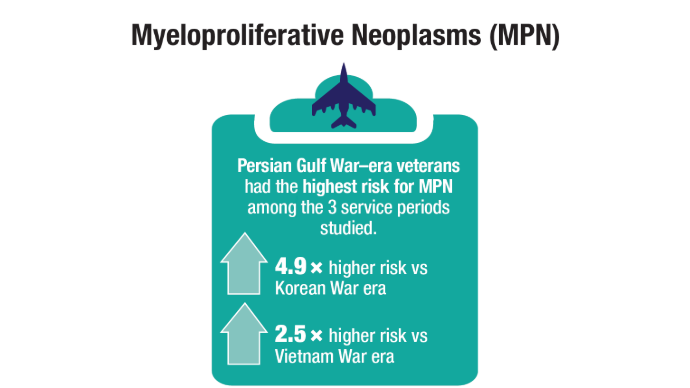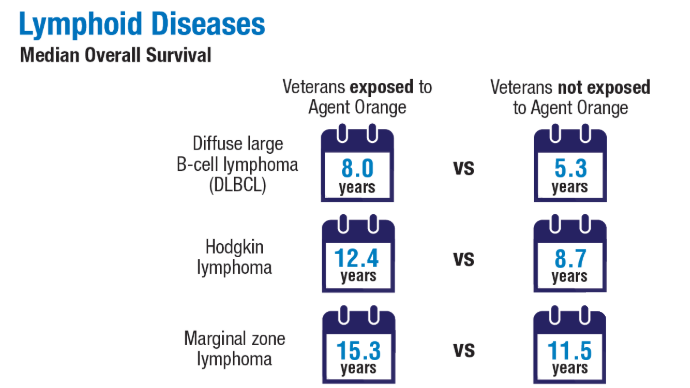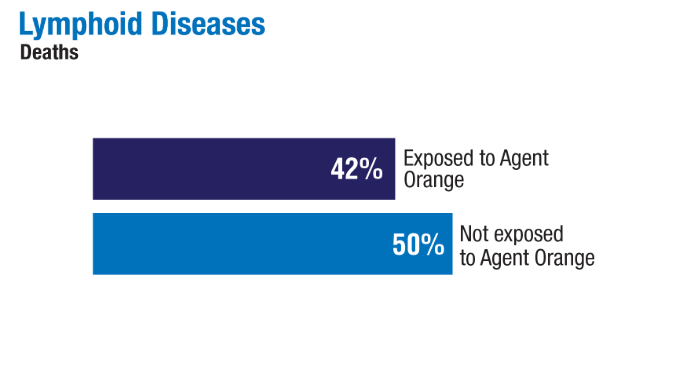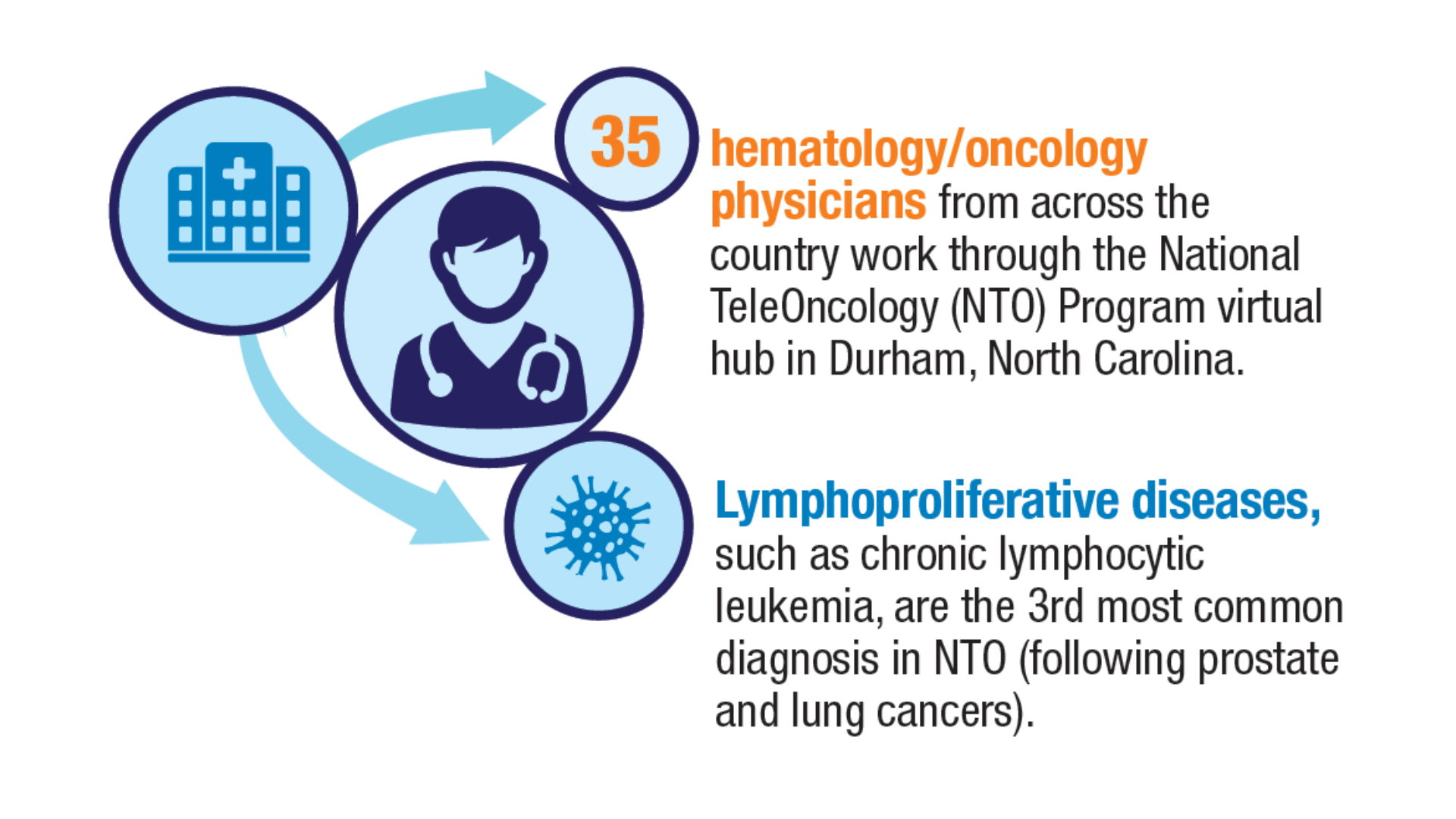Advances in Blood Cancer Care for Veterans





Thomas Rodgers, MD
Durham VA Medical Center
Durham, North Carolina
Dr. Rodgers has no relevant financial relationships to disclose.





Hematologic malignancies encompass a broad range of distinct cancers, generally categorized as lymphoid (eg, lymphoma), myeloid (eg, leukemia, myelodysplastic syndromes, myeloproliferative neoplasms [MPNs]), and plasma cell neoplasms (eg, multiple myeloma).1 The veteran population is aging; this, in combination with other potential veteran-specific risk factors, is leading to an increased risk of hematologic malignancies.2 Of note, the risk for MPN diagnosis has recently been studied in veterans who served during the Korean, Vietnam, and Persian Gulf War eras.3 In addition, survival trends for different blood cancers, such as lymphoid malignancies, vary among veterans exposed to Agent Orange.4 Conflicting results have been found that point to the importance of future research.4
Veterans in rural areas face barriers to treatment and clinical trial enrollment due to long travel distances and lack of trial availability, creating what are termed “clinical trial deserts.”5 Teleoncology has become crucial in bridging this gap by improving access to blood cancer treatments and clinical trials.5,6 Novel decentralized trial designs involving telehealth can further expand participation in remote areas.5
Over the past year, there have been advances in the treatment of blood cancers as well as the use of large data sets to better understand cancers trends and new technologies to reduce disparities in access to care.6,7 The availability of greater therapeutic options, new care modalities, and improved risk assessments herald an exciting time in the care of patients with hematologic malignancies, with the expectation that this care will continue to advance through 2025.
 Risk and Survival Outcomes in Veterans With Blood Cancers3,4
Risk and Survival Outcomes in Veterans With Blood Cancers3,4
A study of veterans from 3 war eras sought to evaluate the connection between service period and MPN development. Risk and Survival Outcomes in Veterans With Blood Cancers3,4
Risk and Survival Outcomes in Veterans With Blood Cancers3,4
Persian Gulf War–era veterans were found to have MPN more often than veterans from the Korean and Vietnam War eras. Risk and Survival Outcomes in Veterans With Blood Cancers3,4
Risk and Survival Outcomes in Veterans With Blood Cancers3,4
 Risk and Survival Outcomes in Veterans With Blood Cancers4
Risk and Survival Outcomes in Veterans With Blood Cancers4
Vietnam War–era veterans with lymphoid malignancy exposed to Agent Orange showed longer survival than nonexposed veterans, with no differences in number of comorbidities or amount of alcohol use. Risk and Survival Outcomes in Veterans With Blood Cancers4
Risk and Survival Outcomes in Veterans With Blood Cancers4
This could have potentially been due to increased health care utilization in those exposed to Agent Orange but this was only the case for patients with mantle cell lymphoma and not other subtypes. Expanding Blood Cancer Care for Rural Veterans5,6
Expanding Blood Cancer Care for Rural Veterans5,6
A 2024 study evaluating trial availability in proximity to 13 VA medical centers identified rural areas as “clinical trial deserts.” Expanding Blood Cancer Care for Rural Veterans5,6
Expanding Blood Cancer Care for Rural Veterans5,6
The study also explored provider referrals and patient interest in clinical trials. Over 16 months, 9% of veterans who expressed interest followed through with enrollment. Teleoncology in the VA6
Teleoncology in the VA6
Teleoncology care at the VA continues to increase and uses a range of different modalities, such as video consults and telephone visits. Video visits comprise 10%-12% of all VA outpatient care, representing a 2300% increase from the pre-pandemic era. Risk and Survival Outcomes in Veterans With Blood Cancers3,4
Risk and Survival Outcomes in Veterans With Blood Cancers3,4
A study of veterans from 3 war eras sought to evaluate the connection between service period and MPN development. Risk and Survival Outcomes in Veterans With Blood Cancers3,4
Risk and Survival Outcomes in Veterans With Blood Cancers3,4
Persian Gulf War–era veterans were found to have MPN more often than veterans from the Korean and Vietnam War eras. Risk and Survival Outcomes in Veterans With Blood Cancers3,4
Risk and Survival Outcomes in Veterans With Blood Cancers3,4
 Risk and Survival Outcomes in Veterans With Blood Cancers4
Risk and Survival Outcomes in Veterans With Blood Cancers4
Vietnam War–era veterans with lymphoid malignancy exposed to Agent Orange showed longer survival than nonexposed veterans, with no differences in number of comorbidities or amount of alcohol use. Risk and Survival Outcomes in Veterans With Blood Cancers4
Risk and Survival Outcomes in Veterans With Blood Cancers4
This could have potentially been due to increased health care utilization in those exposed to Agent Orange but this was only the case for patients with mantle cell lymphoma and not other subtypes. Expanding Blood Cancer Care for Rural Veterans5,6
Expanding Blood Cancer Care for Rural Veterans5,6
A 2024 study evaluating trial availability in proximity to 13 VA medical centers identified rural areas as “clinical trial deserts.” Expanding Blood Cancer Care for Rural Veterans5,6
Expanding Blood Cancer Care for Rural Veterans5,6
The study also explored provider referrals and patient interest in clinical trials. Over 16 months, 9% of veterans who expressed interest followed through with enrollment. Teleoncology in the VA6
Teleoncology in the VA6
Teleoncology care at the VA continues to increase and uses a range of different modalities, such as video consults and telephone visits. Video visits comprise 10%-12% of all VA outpatient care, representing a 2300% increase from the pre-pandemic era. Risk and Survival Outcomes in Veterans With Blood Cancers3,4
Risk and Survival Outcomes in Veterans With Blood Cancers3,4
A study of veterans from 3 war eras sought to evaluate the connection between service period and MPN development. Risk and Survival Outcomes in Veterans With Blood Cancers3,4
Risk and Survival Outcomes in Veterans With Blood Cancers3,4
Persian Gulf War–era veterans were found to have MPN more often than veterans from the Korean and Vietnam War eras. Risk and Survival Outcomes in Veterans With Blood Cancers3,4
Risk and Survival Outcomes in Veterans With Blood Cancers3,4
 Risk and Survival Outcomes in Veterans With Blood Cancers4
Risk and Survival Outcomes in Veterans With Blood Cancers4
Vietnam War–era veterans with lymphoid malignancy exposed to Agent Orange showed longer survival than nonexposed veterans, with no differences in number of comorbidities or amount of alcohol use. Risk and Survival Outcomes in Veterans With Blood Cancers4
Risk and Survival Outcomes in Veterans With Blood Cancers4
This could have potentially been due to increased health care utilization in those exposed to Agent Orange but this was only the case for patients with mantle cell lymphoma and not other subtypes. Expanding Blood Cancer Care for Rural Veterans5,6
Expanding Blood Cancer Care for Rural Veterans5,6
A 2024 study evaluating trial availability in proximity to 13 VA medical centers identified rural areas as “clinical trial deserts.” Expanding Blood Cancer Care for Rural Veterans5,6
Expanding Blood Cancer Care for Rural Veterans5,6
The study also explored provider referrals and patient interest in clinical trials. Over 16 months, 9% of veterans who expressed interest followed through with enrollment. Teleoncology in the VA6
Teleoncology in the VA6
Teleoncology care at the VA continues to increase and uses a range of different modalities, such as video consults and telephone visits. Video visits comprise 10%-12% of all VA outpatient care, representing a 2300% increase from the pre-pandemic era.Item 1 of 8Click to view more from Cancer Data Trends 2025.
,false×ADVERTISEMENTADVERTISEMENT
